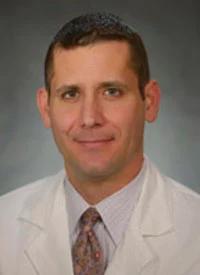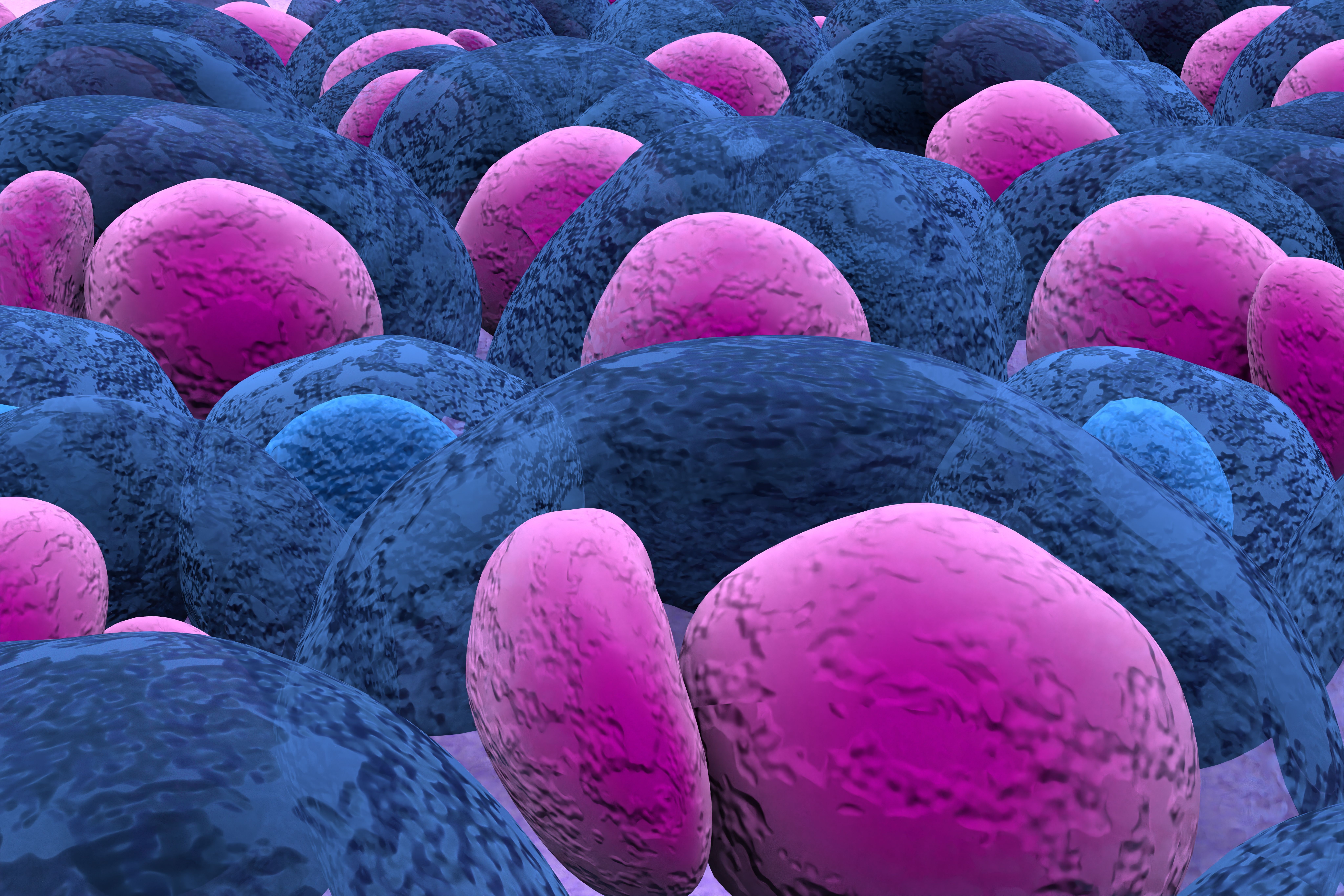Targeting Multiple Myeloma With the Latest Therapies
In an interview with Targeted Oncology, Adam D. Cohen, MD, discussed the impressive efficacy of FDA-approved agents, alongside their toxicity profiles, for the treatment of multiple myeloma.
Adam D. Cohen, MD

The field of multiple myeloma is exploding with novel therapies, including with new developments for chimeric antigen receptor (CAR) T-cell therapies and bispecific antibodies that are offering oncologists a roadmap to optimizing patient care.
Currently, there are 2 FDA-approved CAR T-cell therapies for multiple myeloma: idecabtagenevicleucel (ide-cel; Abecma) and ciltacabtageneautoleucel (cilta-cel; Carvykti). These agents have high response rates and can be durable. However, they also carry risks such as cytokine release syndrome and neurologic toxicity.
There are also 3 FDA-approved bispecific antibodies for multiple myeloma, including elranatamab (Elrexfio), teclistamab (Tecvayli), and talquetamab (Talvey). While bispecific antibodies are generally less toxic than CAR T-cell therapies, they need to be administered continuously.
In an interview with Targeted OncologyTM, Adam D. Cohen, MD, associate professor of medicine at the Hospital of the University of Pennsylvania, discussed the impressive efficacy of these FDA-approved agents, alongside their manageable toxicity profiles.
Targeted Oncology: How has the field of targeted therapies for multiple myeloma evolved in recent years?
Cohen: There has really been an explosion of new therapies for multiple myeloma and especially the past 3 or 4 years. Particularly, what I'll be talking about are the T-cell redirecting therapies, so CAR T cells and bispecific antibodies. We have had 5 of these now approved in the past few years, and they are making a big difference for our patients, particularly with relapsed/refractory myeloma.
In your view, what have been some of the most significant advancements in targeted therapies for multiple myeloma made in 2023? What can we expect in 2024?
In 2023, we saw the approval of 2 new bispecific antibodies for multiple myeloma. One is called elrenatomab, a BCMA-targeted treatment, and 1 is called talquetamab, hitting a new target, GPRC5D, and there is teclistamab, which was the prior bispecific antibody that was approved in late 2022. So now we have 3 of these off-the-shelf, very potent T-cell engaging bispecific antibodies to treat myeloma.
In addition, we saw some new data for the CAR T cells in multiple myeloma, particularly data from the first randomized clinical trials, comparing these agents, ide-cel and cilta-cel, to our older standard-of-care regimens for less heavily pretreated patients and showing significant progression-free survival advantages for the CAR T cells. Again, just reenforcing what we have already been doing, which is using these agents hopefully a little bit earlier.
Multiple Myeloma multiplex leukemia cancer 3d color render illustration closeup: © LASZLO - stock.adobe.com

Would you be able to walk through some of those options and agents that are available?
For CAR T cells, [there are] 2 that are available. One is called ide-cel and 1 is cilta-cel. These are both BCMA-directed CAR T-cell products. [We] have to do apheresis to collect T cells from the patient. There is a manufacturing process that can last several weeks, and then you reinfuse those into the patient after lymphodepleting chemotherapy. These are currently approved after 4 more prior lines of therapy. That includes a CD38 antibody, proteasome inhibitor, and [immunomodulatory drug]. In the United States, there are 3 prior lines. As I mentioned, we are all hoping that those might be moving a little bit earlier based on some of those phase 3 trials coming out.
What are some of the potential benefits and risks associated with these agents?
I think 1 of the big benefits is that it is a one and done treatment that [we] infuse into the patient. The CAR T cells are sort of like a living drug that is made from the patient's own cells that can persist for months and try to eliminate residual disease. Patients get a break from treatment, which is something they have not had in many years once they have had relapsed/refractory myeloma.
In addition, these are potent. They have high response rates, anywhere from 73% for ide-cel up to 98% for cilta-cel, and some of these responses can be very durable, even 4 years in some patients. Now, the risks of CAR T cells are well described. They include acute risks like cytokine release syndrome and neurologic toxicity, then later risks that can include infections, cytopenias, low blood counts, and in some cases, some rare toxicities such as a Parkinson-like neurotoxicity, as well as secondary malignancies. Certainly, [we] have to counsel patients about all these risks, [we] have to monitor them closely, but all the data suggests the benefits definitely seem to outweigh these risks.
What about the bispecifics?
The bispecific antibodies have similar risks in terms of cytokine release syndrome and neurologic toxicity. In the beginning, the first week or so of treatment, though, those risks seem to be lower than CAR T cells, and they tend to be less severe. The downside of the bispecifics [is] that they are continuous therapies. They are not a one and done, so you do have to keep administering them. Although the frequency of administration can go down over time, there are studies now exploring even fixed durations of these treatments. The advantages, though, are that they are off-the-shelf. [We] can stop these treatments right away, [we] do not have to refer to a CAR T-[cell] center or wait for manufacturing, and they also can be very potent, their response rates somewhere in the 60% to 70% range for these and many of these can also be very durable.
[We] still have to look out for infections, and that is a key thing to look out for. There are a lot of infectious prophylaxis that are important with these agents. All our patients are getting [Intravenous immunoglobulin (IVIG)] monthly. They are on antiviral prophylaxis, antipneumocystis prophylaxis, and we recommend getting vaccinations as well, ideally before you start treatment. Those are the sort of overview of risks and benefits with bispecifics. For teclistamab and elrenatamab, which hit BCMA, the main risks are that they can deplete your normal plasma cells, which also express that antigen, so there is profound hypogammaglobulinemia, higher risk of infection over time, and that need for IVIG and other infectious measures.
Talquetamab is a little different. It hits a different target called GPRC5D, which is also a plasma cell antigen [that is] highly expressed in myeloma, but it can be expressed on some other normal tissues, including some hair follicles, skin, nail cells, and the papillae of the tongue. There are some unique toxicities with this agent. It can cause some rash or peeling of the skin, some nail changes that sometimes require steroid-based therapies or holding the drug, and then it can cause some altered taste, dry mouth, difficulty swallowing, and some weight loss. These are things that can be managed with appropriate supportive care, dose reductions or dose hold, but something to be aware of and [something we must] inform the patient of so that [we] can work to keep them on the drug.
What other ongoing research is influencing the space?
We are fortunate to have so many new trials coming out as well. I think starting with the existing agents, there are a number of studies that are moving CAR T cells or bispecifics much earlier in the course of myeloma treatment and not waiting until patients have had 3, 4, or 5 lines of therapy. There are studies in early relapse, and there are even studies for newly diagnosed patients, either as a consolidation therapy after induction, or for patients who have had a stem cell transplant but have not had an optimal response. There are some small pilot studies that have been done showing feasibility. Now, there are some big, international, randomized phase 3 trials where either CAR T cells or bispecifics are going to go head-to-head with our standard therapies, including stem cell transplant, so this is really exciting. We are also hoping that moving these earlier may make them work better, and perhaps get to that elusive cure.
In terms of other things coming out, there are a number of other bispecifics and CAR T-cell products that are being developed. One is a drug called cevostamab, which is a bispecific targeting FcRH5, another tumor antigen that is on the surface of myeloma cells, showing some interesting preliminary data in relapsed/refractory patients and being explored in earlier settings as well. Then there are a whole bunch of new cell therapies coming out, rapid manufacturing CAR T-cell products where the vein-to-vein time can be under 2 weeks and [we] can get it into patients much faster, allogeneic CAR [T-cell] products where they are using healthy donor T cells to be off-the-shelf, and even cellular therapies where they are using natural killer cells, so called CAR NK, which is another way to target the tumorin this case, myeloma, but perhaps in a less toxic fashion than with CAR T cells. All of these are entering early phase trials, and we are eagerly awaiting the results.
How can oncologists stay informed about the latest developments in targeted therapies for multiple myeloma?
Definitely attend the big conferences, [the American Society of Hematology Annual Meeting] and [the American Society of Clinical Oncology Annual Meeting], and other meetings where these new data are being presented. There are usually updates from those different societies. The International Myeloma Society has an annual meeting, and then has educational sessions and meetings that are being done throughout the year. [One] can usually find someone who has given a talk on these topics, and certainly, we are all willing to talk more about them.
Survivorship Care Promotes Evidence-Based Approaches for Quality of Life and Beyond
March 21st 2025Frank J. Penedo, PhD, explains the challenges of survivorship care for patients with cancer and how he implements programs to support patients’ emotional, physical, and practical needs.
Read More